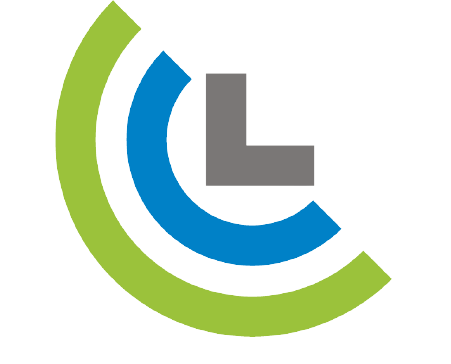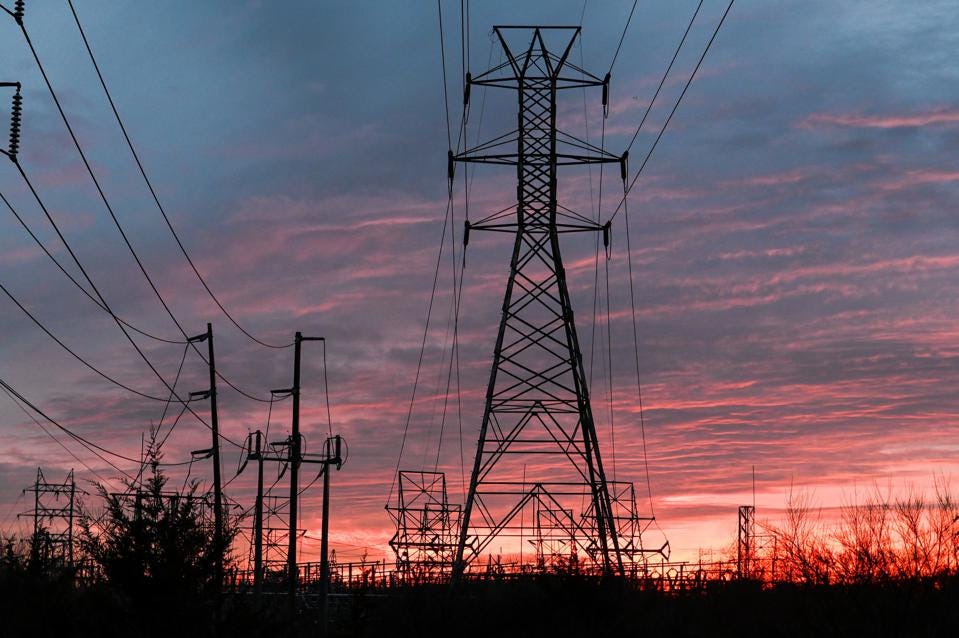America’s Clean Energy Transition Needs Permitting Reform
from Forbes, published as Fossil-Fuel Funded Opposition Is Blocking America’s Clean Energy Transition. Permitting Reform Can Help.
Converging forces make the clean energy transition seem inevitable, but will local hurdles to siting wind and solar projects be the unexpected headwind blocking billions in new investment? Data shows the public, including communities hosting wind and solar projects, approve of renewables and want more of them. Yet fossil-aligned groups are sowing dissent and stalling progress.
Renewable energy is winning on cost as well as consumer preference – it’s more popular among Americans than kittens, after all. And the Inflation Reduction Act (IRA) supplies the long-term policy certainty wind and solar developers have sought for decades.
That’s good news for our climate and economy. Meeting the United States’ greenhouse gas reduction targets requires hitting 50% clean energy by 2030 and it could create millions of new jobs by the end of the decade.
Wind turbine construction near Mountainair, New Mexico, USA. (Photo by Jeff Barger/Construction … [+]
While the clean energy transition appears unstoppable, the speed with which it occurs is still up in the air. And time is of the essence: Taking too long to clean the electricity grid and phase out fossil fuels could lock in catastrophic climate change.
Fully implementing the IRA is key to transitioning fast enough. States and federal agencies will determine the law’s success or failure as they finalize guidance on its clean energy provisions and tap new billions in new funding.
But fully realizing the IRA’s benefits will be hard without addressing a simple reality—it takes too long to build stuff. And sometimes, it’s impossible. That is, unless we overcome local permitting barriers.
Untangling the red tape
Renewables can beat fossil fuels on the bottom line, states can set ambitious clean energy targets, and consumers and corporations can demand their power comes from the wind and sun, but that all means very little if we can’t actually get new projects permitted and built.
More than 100 ordinances across 31 states blocking new wind and solar development have been passed as of 2021, according to the Sabin Center for Climate Change Law at Columbia University Law School. Just this month, communities in Ohio and Michigan effectively banned wind energy development and recalled local elected officials who supported renewables. However, much of this opposition may not be organic. A handful of rogue actors with fossil fuel ties have spent much of the past decade shopping model ordinances that effectively ban new wind and solar projects in potential host communities.
Clean energy advocates often highlight the fact that it can take a decade or more to build a new transmission line. Proposed transmission lines get caught up in bureaucratic red tape and entangled in lawsuits at both the federal and state levels. Indeed, over the past ten years the U.S. has added ten miles of natural gas pipelines for every mile of transmission.
Faster transmission buildout is needed to connect the best wind and solar resources to population centers, and greater grid connectivity is necessary to manage increasingly variable electricity resources. If policymakers don’t expedite building new transmission, much of the IRA’s clean energy benefits could be lost.
Melville, N.Y.: Power lines along Ruland Road in Melville, New York on February 13, 2020. (Photo by … [+]
For all its controversy, Senator Joe Manchin’s permitting reform bill sought to address the issues plaguing transmission growth, although the legislation ultimately never gained traction. However, both that proposal and the broader discussion around permitting reform have missed an enormous obstacle to solar and onshore wind growth—local permitting.
More than 99% of land-based wind projects are located on private land, and of the 130 gigawatts (GW) of operating solar in the U.S., only 7 GW are on federal lands. This means nearly all wind and solar projects are usually permitted at the state or local level, and federal remedies to streamline approvals can’t facilitate the process.
Unfortunately, proposed wind and solar projects have faced an avalanche of local opposition in recent years, often based on misinformation or outright fallacies. Opposition groups, following a playbook organized by a fossil-funded think tank, spread fallacies about impacts to wildlife, property values, health, and more, sowing fear and anger.
Credible, peer-reviewed research refutes almost all of these spurious claims, but once the misinformation spreads, it’s often too late. That has slowed progress, killed projects, and made renewables more expensive, jeopardizing our ability to quickly transition to clean energy and mitigate climate change.
Local opposition, often based on misinformation, is slowing our clean energy progress
Large bipartisan majorities of the U.S. public favor generating more of our electricity from wind and solar. And the people already living around operating renewable energy projects give the experience an overwhelming stamp of approval.
Lawrence Berkley National Laboratory finds 1.3 million U.S. homes are located within five miles of an operating wind turbine, and in a representative survey of that population, 92 percent of respondents reported positive or neutral experiences. Here are some things with an approval rating lower than 92 percent—apple pie, child labor laws, and baseball.
Studies of the Block Island offshore wind farm have also shown support grew and opposition fell once the project was up and running and people experienced what it would actually be like living and working nearby.
So if large pluralities of Americans want more renewables, and the people living near operating projects find the experience overwhelmingly positive, where is the backlash coming from? There’s no question utility-scale wind and solar projects change communities, and people are often wary of change. But it also appears there’s an organized, funded program to stoke fears.
Fossil-funded opponents sow doubt in host communities.
The Guardian, DeSmog Blog, and Media Matters and others have reported on a network of individuals tied to fossil fuel-funded think tanks who tour the country and give misinformation-filled presentations to communities where renewable energy projects are proposed.
This artificial fear-stoking is constraining our ability to build new wind and solar projects.
About a third of Indiana is now off-limits for wind development because of overly burdensome local ordinances or moratoria. Even in Iowa, long-considered a success story where clean energy supplies 62 percent of electricity, between 49 and 77 percent of candidate sites are now off-limits because of local restrictions. And as InsideClimate News has reported, local elected officials who support proposed renewable energy projects are often pressured to change their stances or face challenges from project opponents. These battles are fierce and often create deep fissures in previously close-knit communities.
“At the end of the day, if local governments are not setting rules that allow for the infrastructure to be sited, [clean energy] policies cannot be achieved,” says Dr. Sarah Mills, who researches rural renewable energy at the University of Michigan. “These local officials are not necessarily experts in energy, and so when you have people coming and stating things as facts, especially if there’s nobody fact-checking everything… it’s difficult. They’re certainly making decisions based on what they’re hearing.”
Getting around the roadblock
If we’re going to meet our climate goals, we simply need to build a lot of new wind and solar projects and get around the local permitting logjam.
The federal government can help by increasing its offshore wind emphasis. The Biden administration is targeting 30 GW of offshore wind projects by 2030, development is well underway along the East Coast, and encouraging progress is happening along the West Coast and Gulf of Mexico. Because the U.S. Interior Department ultimately approves projects in federal waters, it can avoid local permitting fights and misinformation campaigns. However, the now-abandoned Cape Wind project demonstrated that threat is not zero, as a strange bedfellows coalition that included Sen. Ted Kennedy and a Koch brother killed that project.
Block Island, R.I: Deepwater Wind installing the first offshore wind farm at Block Island, Rhode … [+]NEWSDAY VIA GETTY IMAGES
Federal permitting reform can also accelerate progress by making it easier to build wind and solar projects on federal lands. Only a small fraction of operating renewable energy projects are sited on federal lands, even though the federal government owns 27% of the country’s total land.
State and local governments can also avoid local permitting barriers by reusing retiring fossil fuel plants as potential renewable energy sites. These sites are already accepted energy infrastructure in their communities and have the added benefit of existing transmission access. State energy offices could also streamline permitting by conducting the process themselves, rather than relying on a patchwork of local ordinances. This is likely to be the most difficult remedy, as the politics of bypassing local control are difficult
More research is needed on the topic of local permitting as well. Social science research shows perceptions of fairness during renewable energy planning and permitting has an outsized influence on project acceptance in host communities. And researchers can investigate how to counteract misinformation and create trusted messengers across society – researchers from the University of Minnesota Duluth have found misinformation shared by opposition groups on Facebook is “increasing perceptions of human health and public safety risks related to wind by sharing news of disasters and misinformation over health assessment risks.”
Until we get better at inoculating communities against this false rhetoric, the clean energy transition will continue facing an uphill climb, putting our climate goals at risk. Even with all the momentum on its side, renewable energy still must overcome a number of hurdles, and we can’t forget about the oft-overlooked local permitting problem.
— Correction: An earlier version of this article stated the Koch brothers worked against Cape Wind, as opposed to one brother. The post has been updated to correct this.
We are a nonpartisan climate policy think tank delivering high-quality research and original analysis to help policymakers make
I am Energy Innovation’s Deputy Director of Communications, where I execute campaigns that showcase EI’s work in traditional and digital media.






